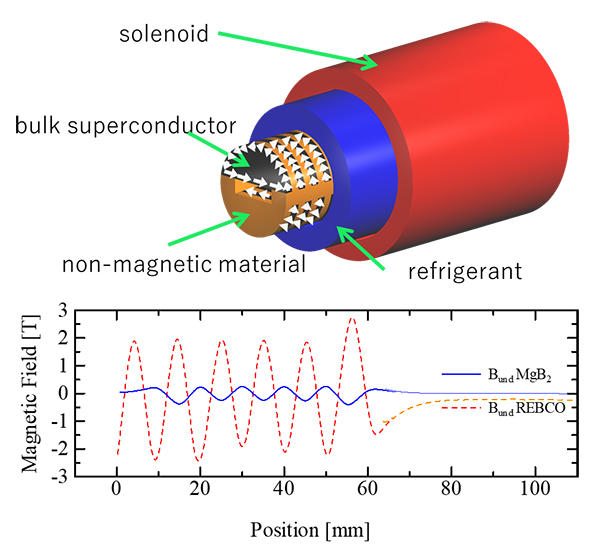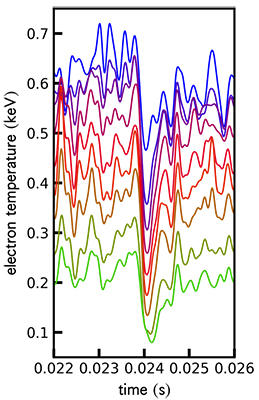Broad Band Energy Science
Laboratory for Complex Energy Processes Broad Band Energy Science Research Section
Associate Professor : Toshiharu KII
Professor(Concurrent) : Shigeru INAGAKI
We are working on the control of charged particles by controlling strong magnetic fields precisely, and on the clarifying of energy and particle transport phenomena in magnetically confined fusion plasmas, aiming at new ways of utilizing energy on a wide range of spatio-temporal scales.
Precise control of periodic magnetic fields using bulk superconductors and development of new applications using local non-uniform magnetic field
High brightness hard X-ray higher than 10 keV, which play an important role in material science, requires 6-8 GeV-class large synchrotron radiation facilities such as SPring-8. However, such large facilities require a lot of cost, thus the use of high brightness hard X-rays is not so easy. In order to increase usability of the hard X-ray, new technology for generation of hard X-rays in a compact and energy-saving 3 GeV-class synchrotron radiation facility is desired. Therefore, we have focused on bulk superconductors, which can handle ultra-high currents, and have been working on the innovative undulator that generate hard X-ray even at the 3 GeV-class synchrotron radiation facility. Through the development of the innovative undulator, we aim to contribute to a carbon-neutral society by significantly reducing the environmental load required for cutting-edge synchrotron radiation research. We also aim to develop advanced magnetic field control technology utilizing supercurrent induced in the bulk superconductors to open up new application fields such as magnetic separation/chromatography, spin current manipulation, and generating magnetic replica of helical magnetic fields for fundamental research.

Periodic magnetic field can be generated by applying magnetic field to the stacked array which consists of bulk superconductors and non-magnetic materials. Different superconductor family can generate periodic magnetic field with different features. Red dotted line: strong periodic magnetic field (Rare earth cuprate superconductor, REBCO). Blue line: precise periodic magnetic field (magnesium diboride, MgB2)
Turbulent transport in fusion plasmas
For realization of nuclear fusion reactor, it is important to confine high energy plasma in strong magnetic field. The plasma confinement is deteriorated by turbulent transport, which is driven by inevitable temperature gradient in fusion plasmas. In general, prediction of turbulent transport is difficult because the broadband nature of the spatiotemporal scale of plasma turbulence. We are challenging to the resolve the problems of multi-time-scale turbulence (e.g. abrupt phenomena, nonlocal transport) by using electron cyclotron emission with ultra-fast digital storage oscilloscope and advanced spectrum analysis.

Bursty transport observed in torus plasmas. Heat is transferred to outside of plasma. This phenomenon is similar to avalanches, which are driven by self-organized criticality of turbulent plasma.








